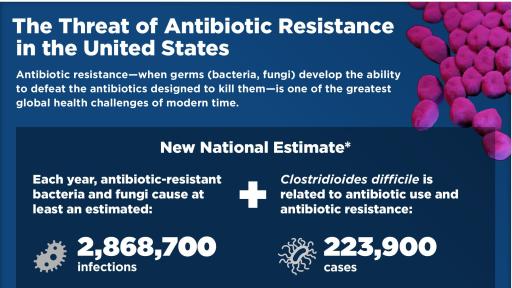How Dr. Maya Can Streamline Detection and Minimize Unnecessary Testing
Public health plays a vital role in monitoring and controlling the spread of infections in communities. From tracking outbreaks to guiding treatment protocols, public health agencies like the Centers for Disease Control and Prevention (CDC) and the World Health Organization (WHO) depend on various data points and diagnostic tests to manage public health crises. However, relying heavily on widespread testing comes with limitations—including false positive and false negative results, which can lead to misguided responses and unnecessary anxiety.
Dr. Maya GPT offers an alternative approach, focusing on symptoms and signs for early identification and containment of infections, and recommending testing only for individuals showing multiple signs of illness. This approach not only reduces unnecessary testing but also increases the accuracy of identifying actual infections.
What Is the Role of Public Health in Infection Control?
Public health departments are responsible for:
- Monitoring Community Health: Public health agencies keep a close watch on health trends and emerging infections within populations, using data from hospitals, clinics, and laboratories.
- Identifying and Tracking Outbreaks: When a new infection emerges, public health officials work to track its spread, identify clusters, and understand its impact. This helps in implementing timely containment measures.
- Guiding Treatment and Prevention Efforts: Public health teams provide guidelines for healthcare providers and communities, from setting up vaccination drives to advising on quarantines and other containment strategies.
- Educating the Public: Public health agencies play an essential role in educating communities about infection prevention, hygiene practices, and health-promoting behaviors.
The Limitations of Relying on Tests and Swabs for Detection
While testing is a valuable tool for confirming infections, it has its limitations:
- Dependence on Widespread Testing: Public health often relies on mass testing to understand the spread of an infection. However, this approach can lead to unnecessary testing of asymptomatic individuals, including healthy adults who are unlikely to carry or transmit the infection. Such testing not only strains resources but can also create unnecessary anxiety in healthy people.
- Inaccuracy of Test Results: Diagnostic tests, including swabs and rapid antigen tests, are not infallible. Estimates indicate that 20-30% of these tests can yield false positives (indicating an infection when there is none) or false negatives (failing to detect an infection that exists).
- False Positives: A false positive result can lead to unnecessary isolation, stress, and disruption in people’s lives. It can also skew public health data, causing authorities to believe an infection is more widespread than it actually is.
- False Negatives: A false negative result is equally problematic, as it can lead to an infected person unknowingly spreading the infection to others, further fueling the outbreak.
- Challenges with Statistical Interpretation: Public health officials often rely on statistical models to interpret infection data, which may not provide a full picture of what’s happening on the ground. Many public health professionals are not clinical doctors who treat patients directly, but rather, they are statisticians who rely on data to make informed decisions. This dependence on broad statistical analysis may overlook subtle, clinical signs that could more accurately indicate infection trends.
How Dr. Maya GPT Improves Infection Detection and Reduces Unnecessary Testing
Dr. Maya GPT offers an approach that relies on tracking symptoms and clinical signs, rather than widespread testing, to identify infections more accurately and cost-effectively. Here’s how Dr. Maya addresses the limitations of traditional public health methods:
- Symptom-Driven Identification: Instead of relying on broad testing, Dr. Maya uses a symptom-based model, which is often more reliable for identifying infections. By evaluating clusters of symptoms (such as fever, cough, and sore throat), Dr. Maya can pinpoint potential infections early and accurately. This approach prevents the need for testing asymptomatic individuals or those with no signs of illness.
- Testing Only When Necessary: Dr. Maya recommends testing only for individuals who present with multiple symptoms—typically more than two or three signs of infection. This method reduces the strain on testing resources and ensures that testing is used where it’s most likely to yield meaningful results. By focusing on symptomatic individuals, Dr. Maya minimizes the risk of false positives and negatives, thereby providing a clearer picture of infection patterns.
- Accurate Identification of Infection Clusters: Dr. Maya can detect clusters of symptoms within communities and identify areas where infections are likely to spread. By using real-time symptom data, Dr. Maya helps public health authorities recognize and isolate clusters early on, reducing the likelihood of a full-blown outbreak.
- Preventing Unnecessary Isolation and Anxiety: By focusing on symptomatic individuals, Dr. Maya prevents unnecessary quarantine and isolation for those who may receive false-positive test results. This approach reduces anxiety among healthy individuals and enables public health efforts to focus on those who truly need intervention.
The Benefits of Dr. Maya’s Symptom-Based Approach
Dr. Maya GPT offers a more precise, resource-efficient method for infection control by relying on a combination of symptom evaluation and targeted testing. The benefits include:
- Reduced Testing Costs: By focusing testing on symptomatic individuals, Dr. Maya lowers the cost of widespread testing, freeing up resources for other critical areas of healthcare.
- Improved Accuracy: With a symptom-based approach, Dr. Maya reduces the likelihood of false positives and negatives, offering a clearer understanding of actual infection rates.
- Early Cluster Detection: Dr. Maya’s ability to track symptoms in real-time helps identify clusters before infections spread widely, allowing public health authorities to take early action.
- Reduced Anxiety and Disruption: Focusing on those with symptoms prevents the stress and isolation often associated with false positives, making for a calmer and more efficient public response to infections.
Conclusion: A Smarter Path Forward for Public Health
The public health sector’s reliance on broad testing has been essential in past outbreaks, but it comes with limitations that can lead to inaccuracies, resource strain, and unnecessary anxiety. Dr. Maya GPT offers a solution by focusing on symptom-driven identification, reducing the need for unnecessary testing and providing a more accurate picture of infections in real-time.
By tracking symptoms, identifying clusters early, and guiding public health responses, Dr. Maya can work alongside public health agencies to streamline infection control and protect communities more effectively. As we face ongoing and emerging infections, a system like Dr. Maya GPT’s symptom-based approach could reshape how we manage public health, focusing on accuracy, efficiency, and ultimately, better outcomes for everyone.

